
As transphobic hate crimes rise by 11% in a year, how to be a better ally
Transgender hate crimes have increased by 11% in England and Wales, according to new data. Statistics from the Home Office found transgender hate crimes increased by to 4,732 offences in the year ending March 2023. The rise could be partly down to public discussion by politicians, the Home Office said. “What we’re seeing in today’s Britain is a horrifying reality of anti-trans narratives that are spreading across media and from high profile politicians, and the Home Office themselves have admitted it is a likely cause of rising violence,” Robbie de Santos, director of external affairs at LGBTQ+ charity Stonewall, told the PA news agency. “We can’t be complacent about any sort of divisive or dehumanising rhetoric, or failure to deliver on policy to protect our communities. “As a survivor of a violent attack myself, I want everyone to know you’re not in this alone. We’ve proven time and time again, that when we come together as a community we can demand and create true change.” The data comes a day after the prime minister Rishi Sunak weighed in on the debate around transgender rights at the Conservative Party Conference. “We shouldn’t get bullied into believing that people can be any sex they want to be. They can’t, a man is a man and a woman is a woman. That’s just common sense,” Sunak said. Health Secretary Steve Barclay used his speech at the conference to propose a ban on trans women from female NHS wards. With many members of the transgender community feeling threatened, what can you do to support anyone struggling? Ambassadors for LGBTQ+ young people’s charity Just Like Us share their advice for allies… Talk about it Your loved ones may not know anyone who is trans, or understand what it means to be transgender. “I need friends and family to keep talking and taking a stand against transphobia,” explains Charlie Hall, 25. “Talk about it with your colleagues, friends and family. Trans people are a small minority and allies need to take action, show others that trans people exist and are just trying to live their lives.” Matty Robins, 20, adds: “Personally, my friends reposting Instagram posts from transgender people in need, or anything about Trans Day of Visibility [March 31] or Trans Day of Remembrance [November 20], for example, has been one of the biggest displays of allyship to me.” Reach out Every trans person may be facing something different. “Ask us how you can support us. Every person is an individual and reacts differently to the situation and therefore needs different kinds of support,” explains 22-year-old Carden Cappi. Challenge hate and discrimination “Trans people need allies standing up for us,” explains Robins. This could include: “Correcting people when they deadname (using the name someone was assigned at birth) or misgender a trans person, whether the trans person is there or not. Fighting for trans inclusion at school, university and in the workplace.” Instead of “calling out” someone, which Robins says can be “inflammatory and cause people to turn away from transgender allyship”, he recommends talking to them about what they just said. “They may not mean it or understand how something they say is perceived as transphobic.” Be willing to learn “Friends and family can be supportive by educating themselves,” explains Charlie Middleton, 24. There are lots of resources out there to help you learn more about the trans community. Books like The Transgender Issue by Shon Faye (Penguin, £10.99) and Juno Dawson’s The Gender Games: The Problem With Men and Women, From Someone Who Has Been Both (Two Roads, £10.99) are well worth a read. You can also follow trans activists on social media – including Charlie Craggs and Munroe Bergdorf – to learn more about the community. Read More Impact of relationships with AI chatbot programmes ‘worrying’, psychologist says Pokemon’s Detective Pikachu Returns and more top games of the week How to talk to kids about cigarettes and vapes, following Rishi Sunak’s smoke-free generation plans 4 must-have denim trends for autumn, from wide-leg jeans to split skirts Doorscaping: How to create a fabulous front door display for autumn More than a quarter of middle-aged women living with ‘metabolically healthy obesity’ – study
1970-01-01 08:00
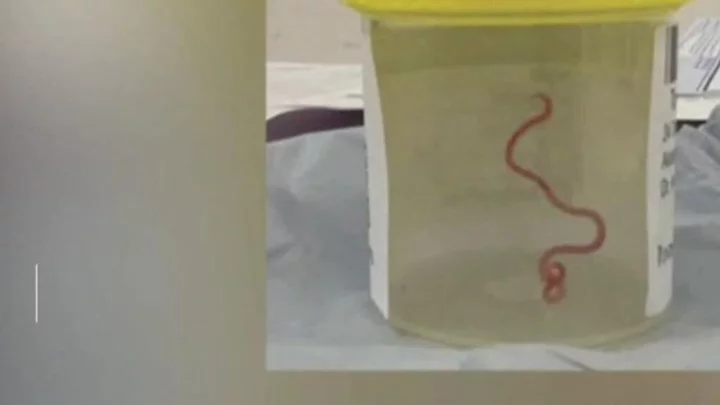
Scientists solve 5-year mystery of tiny unidentified 'sea creature'
Scientists have got to the bottom of a 5-year mystery after finally identifying a tiny sea creature captured on camera in 2018. It is the latest in a series of oceanic discoveries and experts recently observed “zombie worms” devour an alligator in an incredible experiment. For the tiny creature, the baffling question of its identity took a team of zoologists and parasitic worm specialists to solve after the small creature was pictured by an underwater photographer in 2018 off the coast of Okinawa in Japan. After photographer Ryo Minemizu captured the image, he shared it on social media asking the hive mind if they knew what the creature was, but everyone was left stumped. Minemizu was determined not to give up and instead went back to the area and was able to capture another ladybird-sized creature that was the same, or very similar, to the original one he had come across. The research team that was interested in identifying the sea creature approached him and Minemizu sent them the sample to research. Your browser does not support the video tag. Current Biology (2023) The team’s results were published in the Current Biology journal putting an end to the 5-year long mystery baffling experts. In a fascinating twist, the team found that the sample was not one, but two creatures that were clinging tightly to one another. Both were identified as types of cercariae parasitic larvae worms, with experts dubbing one as the “sailor” and the other as a “passenger” thanks to how they behave when they are connected. Passengers were much smaller than the sailors and when they were bonded together, they formed a flat-topped hemisphere shape. They squeeze their bodies together with heads facing the inside of the sphere, meanwhile, their tails latch onto one another. Experts believe the two individual creatures have created a colonial organism that suits both of their needs and according to the study's authors, “represents the first case of labor division in digenean larvae”. Sign up to our free Indy100 weekly newsletter Have your say in our news democracy. Click the upvote icon at the top of the page to help raise this article through the indy100 rankings.
1970-01-01 08:00

Taylor Swift VIP concert and Paul Rudd movie night: The celebrity donations to Selena Gomez’s Rare Impact Fund
Selena Gomez has launched her inaugural Rare Impact Fund Benefit auction, and many A-list celebrities donated big-ticket events and items to raise funds for mental health awareness. On 4 October, the Rare Beauty founder celebrated the first annual Rare Impact Fund Benefit: A Night of Radiance and Reflection in Los Angeles. The event supported Gomez’s non-profit organisation, the Rare Impact Fund, which works to reduce the stigma surrounding mental health and expand access to mental health services and education for young people. Not only did the sold-out event help raise money towards the Rare Impact Fund’s mission of mental health awareness, but it was also attended and supported by a number of star-studded celebrities. Martin Short, Gomez’s Only Murders in the Building co-star, served as emcee and auctioneer for the evening. Of course, the legendary comedian didn’t stray from making the occasional joke or two. “I am proud to call Selena Gomez my friend, and not because she’s successful or rich; because she’s both,” said Short, per the Hollywood Reporter. “What makes tonight very important is we’re here to support youth mental health awareness. I don’t think there’s anyone in this room that hasn’t been touched by mental health and its issues and the pain it can bring a family. We are here to raise urgent funds for the young people who need them.” The benefit also featured a special performance by Grammy-winning singer HER and a DJ set from music producer and Gomez’s “Wolves” collaborator, Marshmello. However, it was the number of big-ticket items and experiences donated by celebrities that were the main event. Perhaps the most notable donation came from Gomez’s longtime friend Taylor Swift, who donated VIP tickets to her Eras Tour concert, listed on the Rare Impact Fund Benefit’s auction site for the starting price of $5,000. The item is no longer available, according to the Hollywood Reporter, because it’s already sold for a staggering $15,000. Gomez’s fellow Only Murders in the Building co-star, Paul Rudd, also donated quite the fan experience - a movie night with none other than Rudd himself for $5,000. Other sold auction items included a glam session with Gomez’s stylists and lunch with Camila Cabello. Pro soccer star Lionel Messi donated a signed jersey, which may explain Gomez’s meme-worthy attendance at his Inter Miami game in Los Angeles earlier this month. The Argentine player’s jersey is still available to bid for $6,000. Other items that have not yet been sold include VIP tickets to Luke Combs’ “Growin’ Up and Gettin’ Old” tour in Los Angeles, a signed banjo from Steve Martin, a luxury five-night Airbnb getaway to Mexico, and a four-night stay at the Four Seasons Resort in Maui. Gomez took the stage at the Rare Impact Fund Benefit on Wednesday, where she spoke about her own struggles with mental health. “This has been the culmination of a lifelong dream for me, but it has also stemmed from some of the darkest moments in my life,” the former Disney Channel star told attendees. “I struggled with the world inside my head for a long time and I felt lost and I felt hopeless at times. In 2020, I received my diagnosis of bipolar disorder and, to be honest, everything quickly changed,” she continued. “I actually got the knowledge and the answers I had been desperate for for so long, and understanding that obviously makes me become more aware of it, and I’m less afraid than I used to be. “With that knowledge, I could seek out the support I needed to be myself, to find my joy again, and tonight I’m very proud to say that I have. I’m working really hard every day and I’m so happy just to be alive and be here with you guys today.” The Rare Impact Fund, which Gomez founded in 2020, has a goal of raising $100m in the next 10 years to expand access to mental health services and education for young people around the world. While the “Lose You to Love Me” singer acknowledged that her mission “probably sounds really absurd,” she noted that it’s people like her little sister, Gracie, and “the world that she and her generation inherits” that inspires her to make the world “a kinder one, a clearer one, a more connected one, with support and access”. “It has been my ultimate dream to launch this fund and it’s probably the most important thing that I’ve ever done, and I just couldn’t be more proud of the Rare Impact team for the work that they’re doing,” Gomez added, before thanking the crowd for “everything you’re going to do tonight; it’s the hardest journey I’ve ever been on but by far the most rewarding”. Gomez first revealed she had been diagnosed with bipolar disorder - a mental health condition that causes episodes of mood swings - in 2020, when she appeared on Miley Cyrus’s Instagram Live series titled “Bright Minded”. During a wide-ranging interview with Rolling Stone published in November 2022, Gomez shared that she checked into a mental health facility in 2018 after experiencing her first bipolar episode. She opened up about the “dark” period in her “early twenties” when she “started to feel like I was not in control of what I was feeling, whether that was really great or really bad”. In her Apple TV+ documentary, My Mind & Me, Gomez described the fear she felt after receiving her bipolar disorder diagnosis. “When I first got out, I didn’t know how I’d cope with my diagnosis,” she recalled in the documentary, which was released last November. “What if it happened again? What if the next time, I didn’t come back? “I needed to keep learning about it,” she said of the condition. “I needed to take it day by day.” Gomez has also been open about her battle with the autoimmune condition lupus, which she was diagnosed with in 2014 and underwent a kidney transplant for in 2017. Read More Selena Gomez opens up about her mental health struggles: ‘Maybe it would be damaging to tell people who I am’ Selena Gomez opens up about bipolar diagnosis: ‘I’ve been to four treatment centers’ Selena Gomez reveals she may never carry children due to bipolar medication How to dress like Taylor Swift and Travis Kelce for Halloween 2023 NFL defends spotlighting Taylor Swift during Travis Kelce’s games Travis Kelce says the NFL is ‘overdoing it’ with their Taylor Swift coverage
1970-01-01 08:00
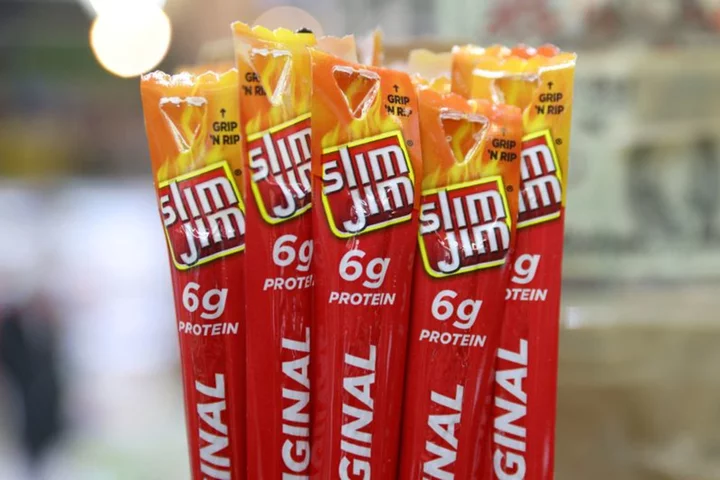
Conagra beats profit estimate as higher prices offset soft demand
By Granth Vanaik (Reuters) -Conagra Brands on Thursday reported quarterly profit above Wall Street estimates, as prices hikes and easing
1970-01-01 08:00

Scientists weren't expecting what they found when they opened up the Bennu asteroid capsule
In late September, scientists at NASA and around the world eagerly awaited the arrival of the OSIRIS-REx capsule containing a sample of the asteroid Bennu. The capsule safely landed on Earth on Sunday 24 September in a Utah desert containing a sample of the asteroid Bennu – categorised as one of the two “most hazardous known asteroids”. When the capsule was first opened, it sparked audible gasps from scientists. Since its arrival, NASA has kept its cards fairly close to its chest but a new blog post from the space agency suggests that progress is going slowly for the “best reason” as there is more sample material than they had anticipated. They explained: “The abundance of material found when the science canister lid was removed earlier this week has meant that the process of disassembling the TAGSAM (Touch-and-Go Sample Acquisition Mechanism) head – which holds the bulk of material from the asteroid – is off to a methodical start.” The OSIRIS-REx’s mission took 7 years to complete, with the sample currently being analysed by NASA taken three years ago before making its way down to Earth. Imagery from the moment the sample was taken confirmed to scientists that there would be asteroid material where they found it, but the quantity of dark particles were far more than they had anticipated. “The very best ‘problem’ to have is that there is so much material, it’s taking longer than we expected to collect it,” said deputy OSIRIS-REx curation lead Christopher Snead of NASA’s Johnson Space Center. “There’s a lot of abundant material outside the TAGSAM head that’s interesting in its own right. It’s really spectacular to have all that material there.” In the coming weeks, experts will continue to work through the particles and begin the complex process of carefully disassembling the TAGSAM to reach the bulk of the Bennu sample inside. Sign up to our free Indy100 weekly newsletter Have your say in our news democracy. Click the upvote icon at the top of the page to help raise this article through the indy100 rankings.
1970-01-01 08:00

Robert Lewandowski major doubt for Clasico with ankle sprain
Robert Lewandowski is doubtful for the first Clasico of the season against Real Madrid after limping out of Barcelona's 1-0 win over Porto in the Champions League.
1970-01-01 08:00
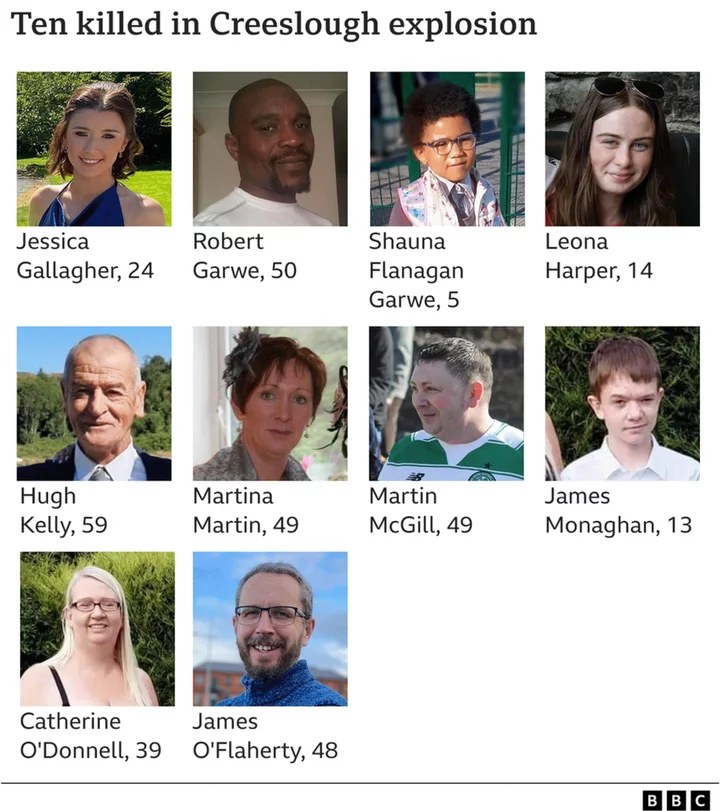
More than 1,350 lines of inquiry into Creeslough blast
Gardaí say they are continuing to investigate the fatal explosion one year on.
1970-01-01 08:00

Monstrous 'zombie worms' devour alligator in jaw-dropping experiment
A warning to readers who don’t have a fear of the deep ocean: this story might soon change that. Back in 2019, a group of researchers who wanted to stir excitement down in the murky recesses of the sea conducted a unique experiment. The team, from the Louisiana Universities Marine Consortium (LUMCON), dropped three dead alligators 6,560 feet (2,000 metres) down into the Gulf of Mexico to see how deep-dwelling creatures would react to an uncommon food source. Initially, the scientists thought that the tough hide of the reptiles would put scavengers off, because it would make it hard for them to reach the more desirable soft flesh. However, this swiftly proved to be far from the case. Within a day, nine large isopods (Bathynomus giganteus) were observed feasting on the first carcass, eventually penetrating its hide and eating their meal from the inside out – imagine a crew of foot-long, pink woodlice crawling all over a gator and you get the picture. The second croc, dropped around 100km away, was almost totally devoured in just 51 days – leaving behind nothing more than its skull, spine, and the rope and weight that were used to anchor it to the sea floor. The scant leftovers became a source of great excitement to the researchers when they noticed it had been targeted by a brand new species of bone-eating worm. They concluded that it appeared to be a member of the Osedax family – commonly known as "zombie worms" because they suck away at, and live off, the bones of the dead – which had never been seen around Mexico before. Testing revealed that its nearest identifiable relatives are native to Antarctica and California, therefore making it an “undescribed species”. The investigators wrote in a paper about their discovery, which was published in the journal PLOS, that the creature “will be named in due course”. So, what happened to the third alligator? Well, that part is a mystery, because within eight days of its drop-off at its 1,996-metre-deep observation spot, it had disappeared. The researchers noted that although the body had vanished, the 20.4kg anchor, shackle and rope used to weigh the animal down were found 8.3 metres away – suggesting they had been “dragged” there. The experts concluded that a “large scavenger” had most likely snapped up the reptile. And given the depth at which it had been left, and the “implied body size necessary to both consume a moderately-sized alligator and move a large weight” it was probably a large shark. Clearly, whatever the beast was, it didn’t feel like sharing its dinner with a bunch of greedy worms. Sign up for our free Indy100 weekly newsletter Have your say in our news democracy. Click the upvote icon at the top of the page to help raise this article through the indy100 rankings.
1970-01-01 08:00
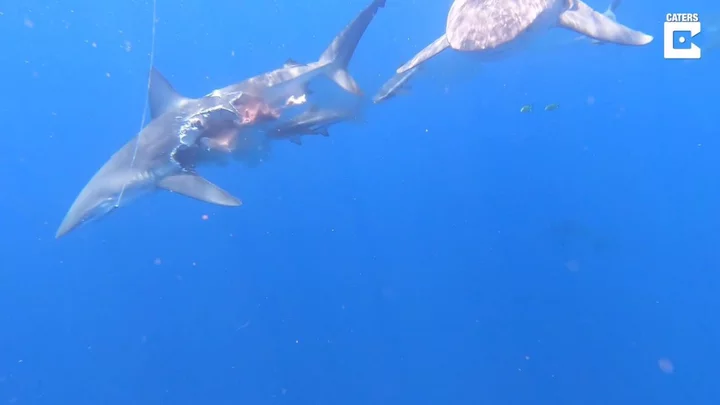
Scientists make creepy discovery about ancient cannibal rituals
A stark new discovery has revealed that cannibalism was a common practice in Europe to commemorate the dead 15,000 years ago. Research from London’s Natural History Museum (NHM) found human remains at a famed Paleolithic site in Cheddar Gorge that appeared to have bite marks across 100 of the bones. Scientists believe this is sufficient evidence of cannibalism in the Magdalenian group. "We interpret the archaeological evidence that cannibalism was practised on multiple occasions across northwest Europe over a short period of time as an indication that such behaviour was part of a funerary behaviour among Magdalenian groups, and not simply practised out of necessity," Dr Silvia Bello, paleoanthropologist and principal researcher said in a statement. Postdoctoral researcher William Marsh went on to say that the study contextualised the area by reviewing all sites "attributed to the Magdalenian culture." "During the terminal time period of the Palaeolithic, you actually see a turnover in both genetic ancestry and funerary behaviour, indicative of population replacement as Epigravettian groups migrated northwards," he said, as per IFL Science. "We believe that the change in funerary behaviour identified here is an example of demic diffusion where essentially one population comes in and replaces another population and that brings about a change in behaviour." Fast forward to 2023, and now people are having their bodies frozen in hopes they can "wake up" in the future. Cryonics "is the practice of preserving humans and animals at cryogenic temperatures in the hope that future science can restore them to a healthy living condition as well as rejuvenate them," according to the National Library of Medicine. "At present cryonics can only be performed after pronouncement of legal death of the cryonics subject." Sign up for our free Indy100 weekly newsletter Have your say in our news democracy. Click the upvote icon at the top of the page to help raise this article through the indy100 rankings.
1970-01-01 08:00

Abkhazia: Russia to build naval base in Georgian separatist region, says local leader
The claim comes from the separatist region as Kyiv steps up attacks on Moscow's Black Sea fleet.
1970-01-01 08:00

How to talk to kids about cigarettes and vapes, following Rishi Sunak’s smoke-free generation plans
Stopping the nation from smoking has long been a top priority for medical experts, families and governments, and PM Rishi Sunak has made his plans for the issues clear. At the 2023 Conservative Party Conference, Sunak said that the legal age for buying tobacco should rise every year from those born in 2009 in a bid to “try and stop teenagers taking up cigarettes in the first place”. He said: “A 14-year-old today will never legally be sold a cigarette” under new legislation he is proposing for England. The Prime Minister also said more must be done to “restrict the availability” of vapes to children, but what can be done by parents in the meantime? Here are the conversations to have with your children… The dangers of smoking “Starting smoking and vaping at a young age can have serious and long-lasting health consequences,” explains Dr Chun Tang, medical director and GP at Pall Mall Medical. “Nicotine is particularly harmful to developing brains. Young people are more vulnerable to nicotine addiction, which can lead to a lifetime of tobacco dependence. Nicotine impacts cognitive function and memory, potentially affecting academic performance. “Aside from the detrimental effect on cognitive ability as outlined above, smoking is, of course, a leading cause of various health problems, including lung cancer, heart disease, stroke, chronic obstructive pulmonary disease (COPD), and many others,” he says. “Smoking during adolescence can also interfere with the growth and development of the lungs, leading to reduced lung function. This can result in breathing difficulties and decreased physical performance.” The dangers of vaping Vaping isn’t a safe alternative, yet he sweet-smelling, plastic steam machines are rife. “Vaping is a relatively new phenomenon, and the long-term health effects are still not fully understood,” says Tang. “There is ongoing research to assess the potential long-term risks, including the development of chronic health conditions.” Vaping has been associated with various adverse health effects, including lung injuries, respiratory problems, and cardiovascular issues, he notes. “Some of the chemicals found in vaping aerosols can be harmful when inhaled into the lungs. “If a smoker takes approximately 15 puffs of a cigarette before putting it out, then we can safely assume that a 600-puff disposable vape is equivalent to around two packs of cigarettes. “Some reports suggest young people can get through as many as 7 vapes a week, the equivalent of 14 packets of cigarettes. “That is an enormous amount of nicotine and so we can expect to see the health risks posed by nicotine to be [more] exacerbated in vapers than smokers – which could be severely impacting cognitive function and affecting academic performance.” It’s essential, he says, for parents, educators, and healthcare professionals “to educate young people about the potential risks of vaping and smoking and provide support and resources for those who want to quit”. Don’t lecture them Try to be open and curious rather than defensive and angry if your child is smoking or vaping. Dr Kerry Irving, senior clinical psychologist at online mental health platform Kooth, says: “Approach any conversation to understand why the young person smokes or vapes rather than to lecture, as the latter can cause people to shut down.” Consider available supportThere may be resources online and in person that might help your child, from the NHS to TikTok creators tracking their quitting journey. “Suggest accessing external support – encourage the young person to see their GP or to make use of some of the free Stop Smoking initiatives online or in your local community,” Irving says. Be sympathetic to relapse Expect wobbles. If your teen or child is quitting smoking or vaping try to stop accept that overcoming an addiction is not easy and recovery is not linear. “Relapses are an important part of changing any behaviour long term,” says Irving. “You can help the young person learn from these by gently encouraging them to reflect on what went wrong and helping them plan for how to try again.” Read More Charity boss speaks out over ‘traumatic’ encounter with royal aide Ukraine war’s heaviest fight rages in east - follow live 4 must-have denim trends for autumn, from wide-leg jeans to split skirts Doorscaping: How to create a fabulous front door display for autumn More than a quarter of middle-aged women living with ‘metabolically healthy obesity’ – study
1970-01-01 08:00
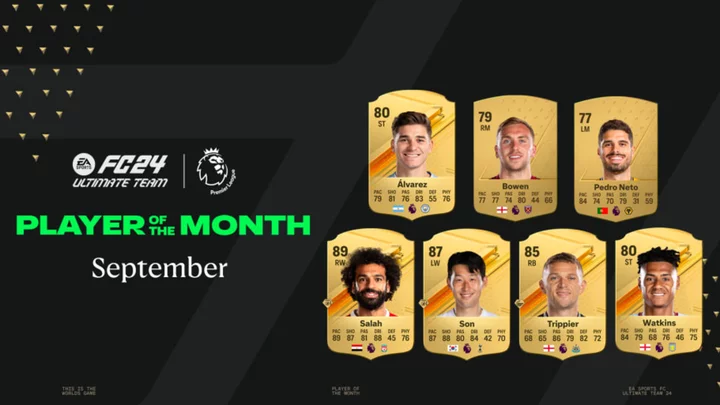
Premier League confirm seven nominees for September 2023 Player of the Month award
Mohamed Salah, Son Heung-min, Kieran Trippier & Julian Alvarez are among the nominees for September 2023's Premier League Player of the Month award.
1970-01-01 08:00
